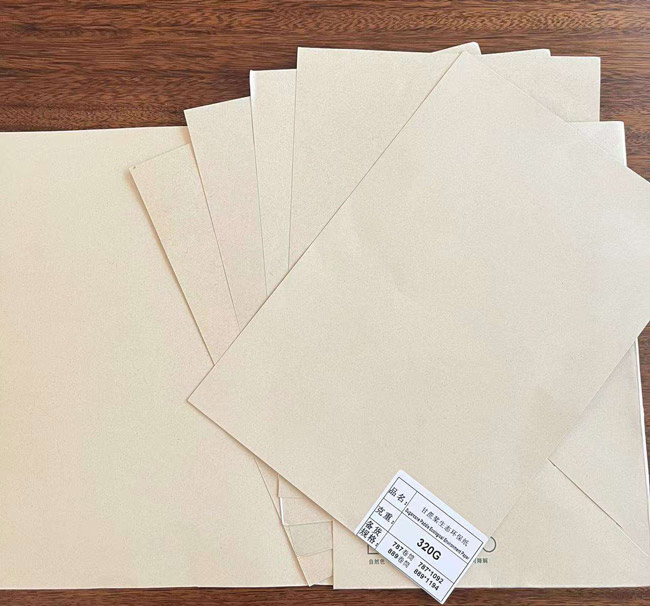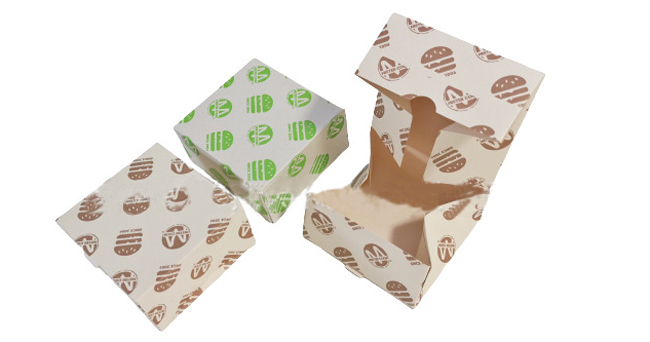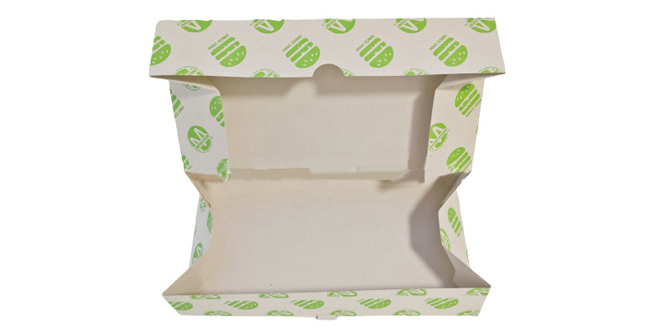What is Bagasse Paper?
What is Bagasse Paper? Exploring its Applications and Benefits
Bagasse paper is an innovative and environmentally friendly alternative to traditional paper. It is made from a fibrous material called bagasse, which is a byproduct of the sugar production process. When sugarcane is processed to extract sugar, the pulp that remains after the juice is extracted is known as bagasse. Instead of disposing of this waste, it can be repurposed to create sustainable paper products.
By utilizing bagasse to produce paper, you are contributing to a more sustainable and eco-conscious future. Bagasse paper has several advantages over traditional paper made from wood; it uses less energy, reduces deforestation, and saves water resources, as sugarcane plants require less water to grow compared to trees. Furthermore, the process of producing bagasse paper generates lower greenhouse gas emissions.
It is essential to be aware of the environmental footprint left by the paper industry. By choosing bagasse paper, you can take a step towards supporting sustainable practices and reducing the demand for wood-derived paper. Start exploring the various types of products made from bagasse paper and make a difference in your daily routine.

Eco-friendly Bagasse Paper
Understanding Bagasse Paper
Bagasse paper, as you might know, is an environmentally friendly alternative to traditional wood-based paper. It is made from the fibrous residue called bagasse that remains after extracting sugarcane juice. Let's explore some essential aspects of this innovative paper product.
Initially, you should know that bagasse is considered a waste product, which means that by turning it into paper, we are effectively upcycling. This process reduces waste and saves valuable trees from being cut down for pulp. In fact, the production of 1 ton of bagasse paper saves roughly 17 trees.
Moreover, the process of transforming bagasse into paper consumes less energy and fewer chemicals than the production of traditional wood-based paper. Consequently, bagasse paper has a smaller carbon footprint, making it a more sustainable choice.
Here is a quick comparison of bagasse paper and traditional wood-based paper production:
Aspect
|
Bagasse Paper
|
Traditional Wood-Based Paper
|
Raw Material
|
Sugarcane waste
|
Trees (deforestation)
|
Energy Consumption
|
Lower
|
Higher
|
Chemical Usage
|
Fewer
|
More
|
Carbon Footprint
|
Smaller
|
Larger
|
You might be wondering about the quality and appearance of bagasse paper. The good news is that it looks and feels similar to wood-based paper. It comes in various weights, finishes, and colors. Besides, the price difference between the two is minimal, making bagasse paper an attractive option for those seeking sustainable alternatives.
In conclusion, bagasse paper presents a more eco-friendly option for paper production as it upcycles waste, saves trees, consumes less energy, and uses fewer chemicals. By making the switch to bagasse paper, you can contribute to a greener future while enjoying the paper's similar look, feel, and functionality as traditional alternatives.
Production Process
Sourcing of Bagasse
Bagasse is the fibrous byproduct you get after extracting juice from sugarcane. It's an eco-friendly and abundant resource, particularly in regions where sugarcane cultivation is widespread. To source bagasse, you'll need to establish a connection with a local sugarcane mill. They usually have an excess of this byproduct, which is often used for biofuel or in the production of paper.
Manufacturing Steps
-
Pulping: First, your bagasse will undergo the pulping process to separate fibers from lignin. Typically, this involves mixing the raw material with water and chemicals in a large container called a digester. After some time, the mixture turns into a pulp that consists mainly of cellulose fibers.
-
Washing and Screening: You'll now need to wash and screen the pulp to remove impurities, such as remaining lignin and other undesired components. This step involves passing the pulp through various stages of filters, screens, and pressurized water systems. Voilà! Your pulp is now clean and ready for the next step in the process.
-
Bleaching and Coloring: To give your bagasse paper a specific appearance and color, you can bleach and dye it as needed. You should only use eco-friendly and safe chemicals for this process, especially if the end product will be used for food packaging or other sensitive applications.
-
Forming and Pressing: In this stage, you'll form the paper by pouring the prepared pulp into a paper-making machine. The machine's wire mesh screen will allow water to drain away, leaving behind a wet sheet of fibers. Next, you press the sheet between rollers to remove even more water and get the desired thickness for your paper.
-
Drying: Your bagasse paper will still be damp after pressing, so you must now dry it out. The most common method is to pass the damp paper through a series of heated rollers. This process evaporates the remaining water and ultimately leaves you with crisp, dry paper.
By following these steps, your production process for bagasse paper will be efficient and environmentally friendly. You can now produce sustainable paper products that cater to the growing demand for eco-conscious alternatives in the market.

Airline Food Packaging Made from Bagasse Paper
Environmental Impact
Biodegradability
When considering the environmental impact of bagasse paper, it's important to recognize its biodegradability. Unlike conventional petroleum-based plastic products, bagasse paper is made from plant fibers and can break down naturally over time. This means that when you use bagasse paper products, you are contributing to a decrease in long-term waste and pollution.
To put this into perspective, consider these common decomposition times:
-
Bagasse Paper: Approximately 2 to 6 weeks
-
Cardboard: 2 to 3 months
-
Traditional Plastic: 20 to 1000 years
As you can see, choosing bagasse paper over conventional materials significantly reduces the time it takes for waste to return to the earth.
Resource Efficiency
Another important aspect of bagasse paper's environmental impact is its resource efficiency. Bagasse is a byproduct of sugarcane processing, which means that producing paper from bagasse takes advantage of a resource that would otherwise be discarded.
Here is a comparison of the resources needed to make 1 ton of each type of paper:
Resource
|
Bagasse Paper
|
Traditional Wood Pulp Paper
|
Trees
|
0
|
17
|
Water (gallons)
|
1,500
|
7,000
|
Energy (kilowatt-hours)
|
1,800
|
6,500
|
As the table shows, bagasse paper production requires significantly fewer trees, less water, and less energy compared to traditional wood pulp paper. By choosing bagasse paper, you are contributing to more sustainable resource usage and a reduced impact on the environment.
Applications of Bagasse Paper
Use in Packaging
Bagasse paper is an excellent choice for packaging. Its unique properties, such as biodegradability and sustainability, make it a preferred option for environmentally-conscious businesses. You will find bagasse paper applied in various products, including:
-
Food packaging: Containers for dry and greasy food, cardboard boxes, and wraps can be made from bagasse paper. Its grease resistance and durability make it suitable for takeaway meals and bakery products.
-
Parcel packaging: With the eCommerce industry booming, there is an increased demand for sustainable packaging materials. Bagasse paper can be used to create parcel packaging materials like cushioning pads, packing paper, and envelopes.

Bagasse Paper Food Packaging Box
Use in Disposable Tableware
The use of bagasse paper in disposable tableware is another popular application. As a natural byproduct from the sugar cane industry, it offers a sustainable alternative to traditional paper and plastic tableware. Some benefits and uses include:
-
Eco-friendly: Bagasse paper is biodegradable and recyclable, making it an environmentally-friendly choice for single-use products in events and parties.
-
Various shapes and sizes: You can find disposable plates, bowls, and cups made from bagasse paper in various shapes and sizes, fitting a wide range of culinary needs.
-
Microwave safe: Bagasse paper can withstand high temperatures, making products made from it microwave safe, providing additional convenience to consumers.
By choosing bagasse paper for packaging and disposable tableware, you are not only making an environmentally responsible decision but also contributing to reducing waste and promoting sustainable practices.

Disposable Bagasse Tableware
Comparisons with Other Forms of Paper
Bagasse vs Recycled Paper
When comparing bagasse paper to recycled paper, there are a few key factors to consider. Firstly, consider the environmental impact. With bagasse paper, you can feel confident that you're using a sustainable and renewable resource in the form of sugarcane residue. On the other hand, recycled paper contributes to reducing waste by recycling previously used paper products.
To better understand the properties of each, see the table below:
Feature
|
Bagasse Paper
|
Recycled Paper
|
Durability
|
Good
|
Good
|
Whiteness
|
Slightly lower
|
Slightly lower
|
Environmental Impact
|
Reduced tree consumption
|
Reduced waste generation
|
In terms of cost, bagasse paper is often cheaper to produce than recycled paper. This is due to the simpler production process, which demands less energy and chemicals. However, depending on the availability of sugarcane, prices can vary.
Bagasse vs Wood Pulp Paper
Wood pulp paper is the traditional form of paper that you are likely accustomed to. The production process involves harvesting trees and processing them into pulp, which negatively impacts the environment.
Here are some direct comparisons between bagasse paper and wood pulp paper:
-
Environmental sustainability: Bagasse paper stands out in terms of environmental sustainability, as it uses a byproduct that would otherwise be wasted. Wood pulp paper production, however, contributes to deforestation and increased CO₂ emissions.
-
Production process: Bagasse paper production requires fewer resources and chemicals compared to wood pulp paper. Additionally, the process is usually less energy-intensive, making it more cost-effective.
-
Durability and whiteness: Both papers possess similar durability, but bagasse paper may have a slightly lower level of whiteness due to the natural color of sugarcane fibers.
In conclusion, when making a choice on the type of paper to use, consider the environmental impact, production process, cost, and performance qualities such as durability and whiteness. Bagasse paper offers a sustainable and cost-effective alternative to traditional wood pulp and recycled paper.
Market Trends
In recent years, bagasse paper has gained popularity due to its environmentally friendly nature. As businesses become more aware of their ecological responsibility, the demand for sustainable alternatives has increased. This is evident in the growing market trends for bagasse paper.
According to recent reports, the global market for bagasse paper is projected to grow at a CAGR (Compound Annual Growth Rate) of around 5% to 7% over the next few years. This growth can be attributed to several factors:
-
Environmental awareness: Governments, corporations, and individuals are increasingly concerned about the environmental impact of their activities. They're adopting eco-friendly products like bagasse paper to decrease their carbon footprint.
-
Disposable income: As disposable income continues to rise, consumers are more willing to spend extra on environmentally responsible products, even if they come at a slightly higher price point.
-
Regulations and incentives: Many countries are imposing strict regulations to protect their natural resources. In response, companies are seeking alternatives to traditional paper products. Some governments also offer incentives for businesses that adopt such products.
To better understand the increasing demand for bagasse paper, let's examine a few key aspects:
Industry Sectors: Various industries, like foodservice, medical, and household products, are incorporating bagasse paper into their supply chains. You'll find it being used in items such as:
-
Food packaging/containers
-
Paper plates and cups
-
Tissue papers and napkins
-
Medical supplies
Geographical Markets: The market for bagasse paper is growing across the world. However, some regions are stepping up their demand, such as:
-
Asia-Pacific: This region, led by emerging economies like China and India, is expected to experience the most growth. Increasing awareness and government support are driving the adoption of sustainable products.
-
Europe and North America: These regions exhibit steady growth due to strict environmental regulations and consumer preference for eco-friendly products.
In conclusion, the market trends for bagasse paper indicate a promising future for this sustainable alternative. Its growing demand across various industries and regions highlights the increasing global recognition of the need for eco-friendly products.
Future Perspectives
Bagasse paper has been gaining attention as a sustainable alternative to traditional wood-based paper. In this section, we will explore some of the future applications and opportunities for bagasse paper.
As global concerns about deforestation and sustainability continue to grow, the demand for eco-friendly products will likely increase. This means that you can expect to see a surge in the application of bagasse paper in various industries, such as packaging, food service, and office supplies. The following list presents some unique opportunities for bagasse paper applications:
-
Packaging: From shipping boxes to product packaging, bagasse paper has the potential to replace wood-based materials, thus reducing the need for deforestation and decreasing the industry's carbon footprint.
-
Food service: Given its biodegradable nature, bagasse paper can be an excellent choice for single-use items like plates, cups, and containers, offering a more sustainable option than plastic or foam products.
-
Office supplies: As more companies prioritize sustainability, they may adopt bagasse paper for everyday use in offices, such as printing and writing paper, envelopes, and notepads.
In addition to industry applications, advancements in technology can lead to improved characteristics of bagasse paper. For instance, researchers are continuously exploring methods to enhance the paper's strength, smoothness, and moisture absorption. By doing so, bagasse paper can become more competitive with traditional paper, facilitating greater adoption by consumers and businesses alike.
It's also essential to highlight the potential economic benefits for countries with a significant sugarcane production. By promoting the use of bagasse paper, these countries could create new job opportunities and reduce waste from sugarcane processing. This shift in manufacturing could further boost the global acceptance of bagasse paper as a viable and sustainable alternative.
In conclusion, the future of bagasse paper seems promising. As the world moves towards more sustainable practices, bagasse paper has the potential to emerge as a critical player in numerous industries, offering various benefits from both environmental and economic perspectives.
Custom Print Packaging Made From Bagasse Paper - Your Expert Factory in China
Unico Packing has been in the paper printing and packaging business for over 20 years, and we can make your logo printed packaging boxes made from bagasse paper. Let's work together to reduce carbon emissions. Protect our only home - the earth.



